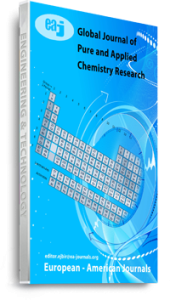The increase in the development and spread of resistance against antimicrobials in recent times have spurred a renewed interest in the study of medicinal plants as alternative sources of antimicrobial treatments that are effective, natural, less-toxic and affordable. Medicinal plants owe their activity to their phytochemical constituents, particularly, their secondary metabolites. This highlights the need to study these plants with the view to identify the phytochemicals that confer on them their unique medicinal properties. Although many plants have been extensively studied, there are still a number of plants that are used in the therapeutic treatment of ailment whose phytochemical constituents have not been determined. Of such plants is Anunuebe (O. aubrevillei), which is a medicinal plant that is commonly used among locals throughout its areas of distribution for the treatment of ailments. This study was therefore conducted to determine the phytochemical and antimicrobial properties of Anunuebe fruit. The phytochemical parameters of the aqueous and ethanolic extracts were assessed using standard procedures. Agar well diffusion method was used to ascertain antimicrobial activities of the different fractions – ethyl acetate, butanol, aqueous and crude – of the extracts against four common human pathogenic microorganisms; Staphylococcus aureus (Gram-positive bacteria), Pseudomonas aeruginosa, and Escherichia coli (Gram-negative bacteria) and Candida albicans (fungi). The qualitative analysis showed the presence of alkaloids, saponins, tannins, flavonoids, terpenoids, cardiac glycosides, proteins, carbohydrates, and reducing sugars in the aqueous and ethanolic extracts of the fruit. The antimicrobial test showed that although ethyl acetate, butanol, aqueous and crude fractions of Anunuebe (O. aubrevillei) fruit extract had activity against at least one of the test organisms, the best activity was observed in the ethyl acetate fraction followed by the crude extract which had activity against all the test organisms. Candida albicans was susceptible to all the fractions, while E. coli was susceptible to only the ethyl acetate fraction. This study showed that the fruit extracts had broad-spectrum antimicrobial and antifungal activities that is dependent on the extraction solvent and concentration used. Furthermore, it can be effectively used in traditional medicine for the treatment of microorganism that infect humans.
Keywords: Okoubaka aubrevillei; phytochemicals; antimicrobial activity; medicinal plants

